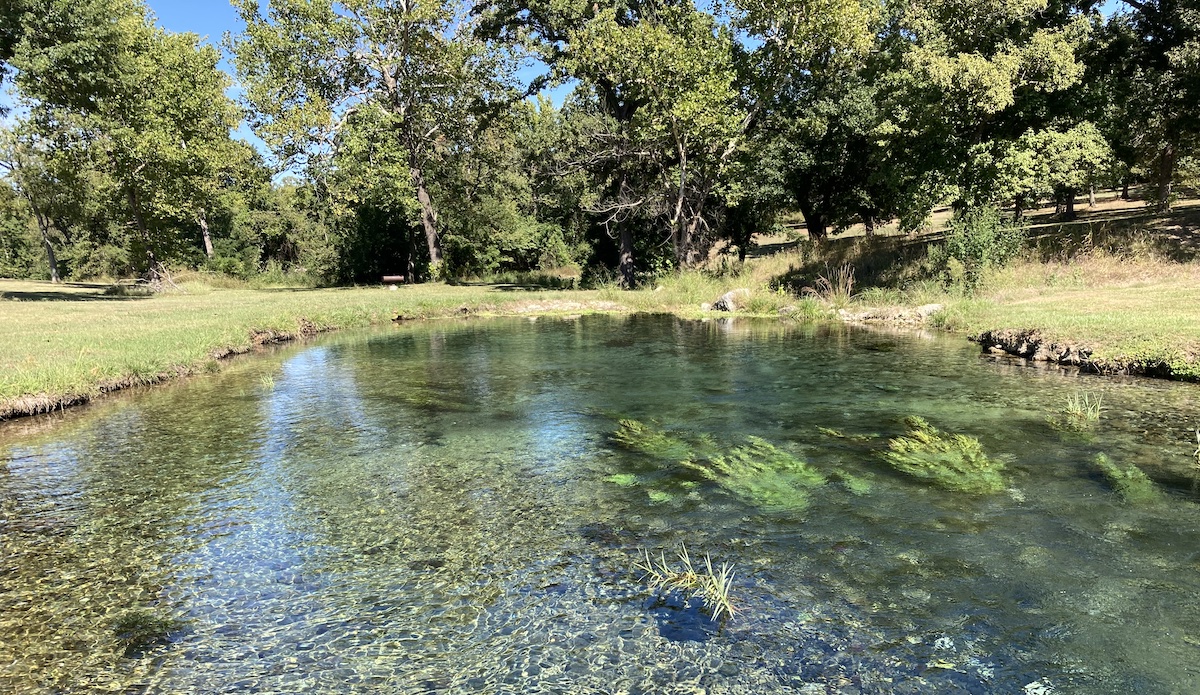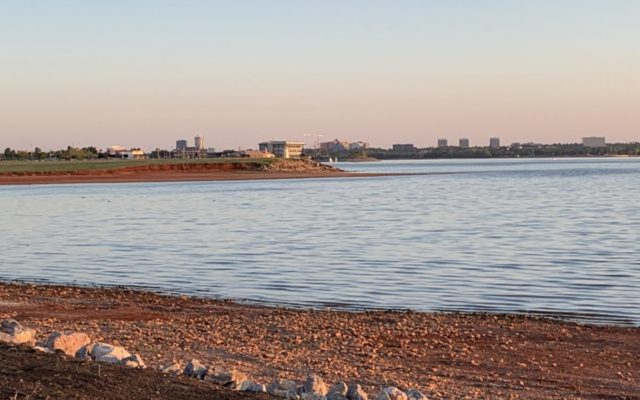

The long hot summer of 2022 is giving way to fall as temperatures drop across the state, but the last few months of searing heat could preview the coming years, as extreme weather patterns continue to strain Oklahoma’s water resources in areas that bake the longest.
This summer, Oklahoma City baked plenty, with more than a dozen days of temperatures above 100 degrees. The hotter it gets, the more water is used for drinking, swimming pools and watering greenspaces.
Oklahoma City has restricted the latter for more than a decade, but that did not prevent OKC from having to tap outside sources to keep up with demand this year, drawing water from one key reservoir nearly 100 miles away.
Elsewhere, Yukon and Norman leaders urged residents to conserve water, as reservoirs in those cities experienced strain. Other municipalities struggled with water pressure issues brought on by outdated infrastructure.
The summer of 2022 is likely a preview of things to come as climate change and a growing population in central Oklahoma and other parts of the state put additional stress on water resources, including in parts of western Oklahoma that have seen extreme drought in recent years. (Following this year’s dry summer, even swaths of eastern Oklahoma are showing “extreme drought.”)
While experts say Oklahoma has substantial of water to meet its future consumption needs, the state will not be immune from problems.
“One of the big impacts is droughts start getting more numerous and more severe” Oklahoma State climatologist Gary McManus said. “Our normal run of the mill droughts are expected to become more severe and of long duration, and those longer droughts will no doubt tax our water resources in certain areas of the state.”
‘The Canton business community would not exist without the lake’
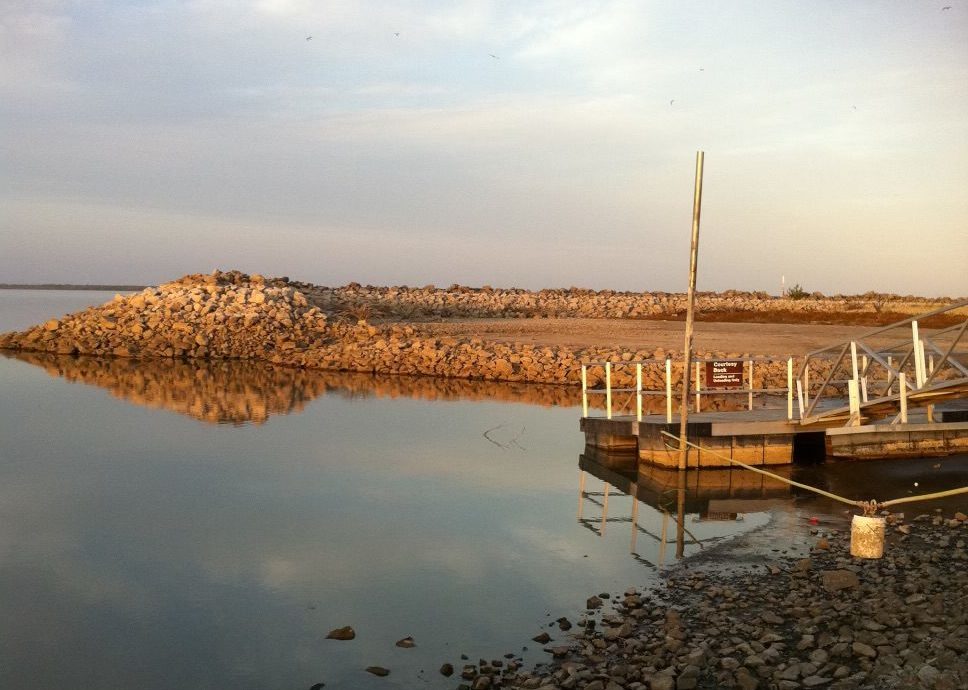
Situated near the Canadian River, Canton Lake lies in western Oklahoma’s Blaine and Dewey counties. It’s home to the Walleye Rodeo, the state’s oldest fishing tournament. The lake’s waters are a popular spot for boating, water skiing and fishing. For the nearby town of Canton, the lake acts as the primary engine of economic activity, said grocery store owner Ron Chapdelaine said.
“The Canton business community would not exist without the lake,” he said. “The population is under 600 and, without it, there wouldn’t be a grocery store. The restaurants wouldn’t be here because there’s not enough population. The lake is everything to us.”
But Canton Lake also acts a water source for Oklahoma City. Through a long-term agreement with the U.S. Army Corps of Engineers, water can be drawn from Canton Lake down the North Canadian River and eventually to Lake Hefner.
The Oklahoma City Water Utilities Trust provides water for 1.4 million people in central Oklahoma. That water comes from rivers like the North Canadian and is stored in five surface reservoirs along a 250-mile span between northwest and southeast Oklahoma. That water flows into the Canton Lake and Lake Hefner reservoirs. In southeast Oklahoma, water is stored in the McGee Creek and Atoka reservoirs and is transported to Lake Stanley Draper through pipelines.
For the first time since 2013, Oklahoma City drew water from Canton Lake this summer. About 2.6 billion gallons were taken from the lake in August. While that drawdown is not as dramatic as the 2011-2013 period that left Canton Lake dry in places and forced cancellation of the Walleye Rodeo, anytime water is taken by Oklahoma City, area residents remember the past and contemplate the future.
Curtis Hoskins serves as president of the Canton Lake Association. Hoskins said the latest water draw from Canton has stirred controversy among those who rely on the lake for income and recreation.
“Some people don’t like it because of what they’ve seen in the past as far as OKC making draws, and then they don’t see any real effort to conserve water on the news in Oklahoma City and other areas, and it rubs some people the wrong way,” Hoskins said. “It’s still a little raw from 2010 and 2011 when they drew it down and it shut down some businesses and some others barely survived.”
Hoskins said Canton Lake is static, receiving about 30,000 acre feet of water in flow per year and losing about the same amount in evaporation each year. An acre foot is equivalent to 326,000 gallons of water.
When Oklahoma City draws water down to Lake Hefner, the impact on Canton Lake is obvious.
“It’s definitely down, and you can see it’s down, but we’re not in the dire situation we were the last time,” Chapdelaine said. “I don’t want to paint the picture that the lake was unusable like it was the last time, but I think any time they start taking water out of the lake, we notice. And I think the other issue is there aren’t really any water restrictions in Oklahoma City. They always say it’s for drinking water, but we really don’t know for sure.”
Oklahoma City implemented an odd-even watering schedule for homeowners a decade ago that remains in place today, but many residents either ignore the restriction or express surprise that it exists. Meanwhile, the City of Oklahoma City implemented no other restrictions during this summer’s heat wave, with even city-operated sprinkler systems running extensively in parks and street medians at times.
The process of drawing water from Canton Lake to Lake Hefner adds to the frustration for Blaine and Dewey County residents.
RELATED
Despite plans and promises, the future of Oklahoma water is uncertain by Brett Fieldcamp
“They lose about 30 percent of the water they take from the lake through absorption in the river bed,” Hoskins said. “So if they’re letting out 30,000 acre feet of water and they lost a third of that to absorption, they’re wasting about 10,000 acre feet every time they do a draw unless there is some kind of event like a big rainfall when it’s happening.”
Hoskins said he appreciates the U.S. Army Corps of Engineers and Oklahoma City Water Utilities Trust involving Canton residents in the process, but he often hears from residents who don’t like the water transfers or object to their timing. The recent Labor Day holiday was one example.
“The newer people seem more attentive to what our concerns are, and even the Oklahoma Water Resources Board, they seem more attentive,” Hoskins said. “But they’re still taking 13,000 acre feet this month, and I got some flack about that from local constituents. But the way I looked at it, I’d rather them take the water after the holiday and not before so it would be down only a couple of feet instead of four. It’s a Catch 22.”
Heat waves expected to be more frequent

The Oklahoma Climatological Survey is tasked with studying climate and compiling data on weather. Gary McManus serves as the OCS’s state climatologist. McManus said summers like the state saw in 2022 are more likely in the future, which will impact water supply.
“If you think back to 2011 to 2015, that four or five-year drought, some of our water supplies in Oklahoma started to dwindle,” he said. “When you have those types of droughts it’s certainly something you become more cognizant of. We’re also dealing with a dichotomy where, at the same time, we’re expecting to see rainfall events become less frequent. And what we do get is expected to be more intense, which could lead to more flash flooding and erosion.”
McManus said that while some parts of the state are more drought prone than others, no area will be spared.
“I think you have to say the entire state of Oklahoma,” McManus said when asked what part of the state might be most affected by future drought. “Obviously, the western part of the state is starting to see more drought conditions as we advance. There’s some research being done about the 100th meridian starting to shift to the east. I think what we’ve seen down the line is that it has shifted toward I-35 and those areas are becoming more arid.”
McManus said evaporation, and depletion of aquifers, are factors in water
“Western Oklahoma would be most under the gun as far as agriculture during those severe drought situations or when temperatures get high and evaporation starts to become a major factor,” he said. “And we have also seen how a lack of rainfall affects aquifers. When you have less frequent rainfall events, it’s difficult to replenish aquifers, and you see water tables go down. We’ve seen that with the Ogallala aquifer, which is the lifeblood of the high plains all the way down to west Texas. We’ve seen tremendous draw downs of fossil water from these aquifers.”
And even when droughts end, and water table levels return to normal levels, the effects live on for years after affecting things like food production.
“If you look back at 2011 to 2015, those really bad summers, there was a lot of damage done in those summers,” McManus said. “We broke a lot of records during those years, and there is a sort of memory the soil holds of the damage done. So even though droughts end, the soil tells a story.”
‘Oklahoma is blessed with a lot of water resources’
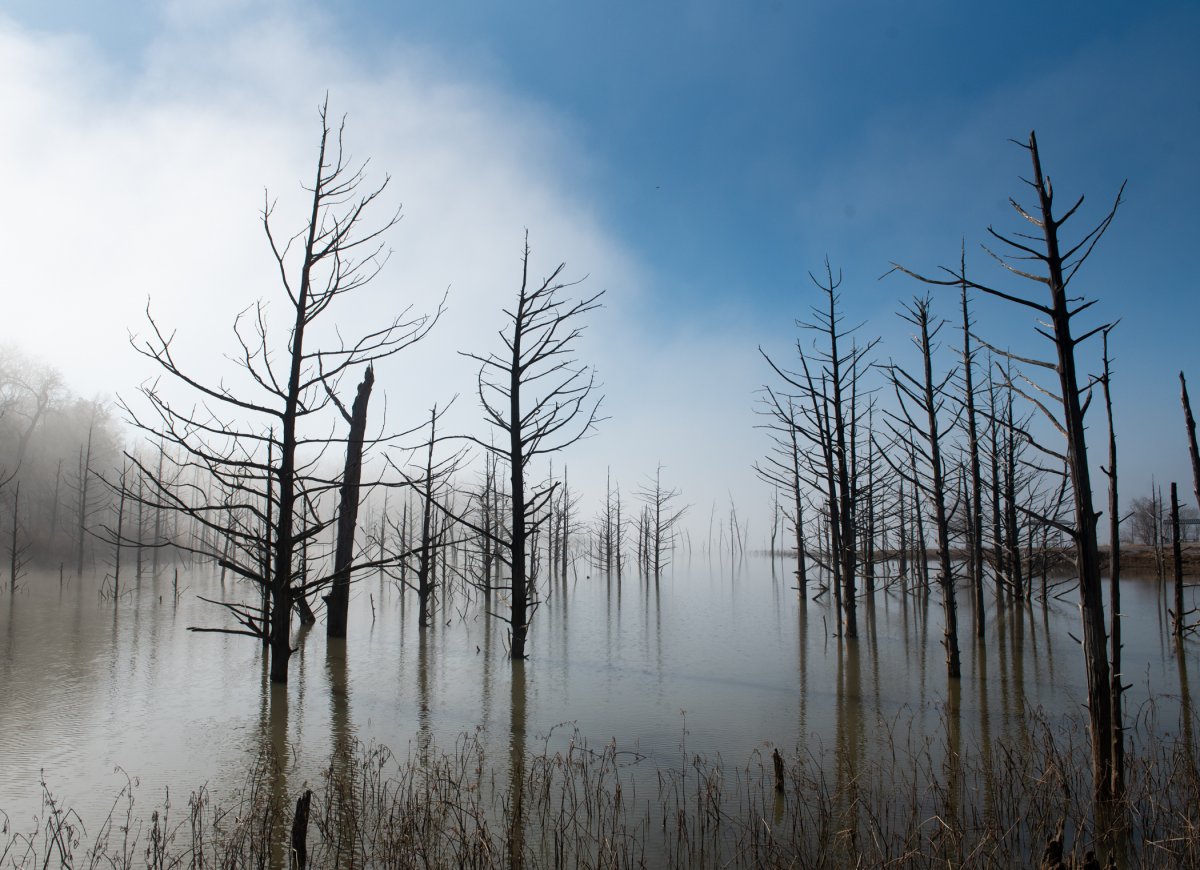
The Oklahoma Water Resources Center is part of Oklahoma State University’s Division of Agricultural Sciences and Natural Resources. The center focuses on efforts to manage and sustain water quality and quantity and how that intersects with agriculture. Director Kevin Wagner said that, in comparison to some states in the southwest and high desert areas like Nevada, Oklahoma has enough water for the foreseeable future.
“Oklahoma is very blessed with a lot of water resources, especially in the eastern side of the state,” Wagner said. “The surface water particularly in that part of the state is tremendous. As far as western Oklahoma, the Ogallala aquifer in the panhandle and northwest Oklahoma has traditionally provided us with a lot of water. In western Oklahoma, there are other aquifers that have served Oklahoma well over time. I think at this time, we have the water we need. Certainly, western Oklahoma is probably more at risk when you look at the future of water supplies. But overall, the state is in relatively good shape.”
Still, Wagner said the state’s water resources face problems. In some areas, water quality is suspect. Water quality can be impacted by weather, but also contaminants produced by industry.
“A lot of the water quality issues we see are with bacteria that comes from sewage and wildlife — those are key sources,” Wagner said. “Too many nutrients in the water is a big issue in the eastern part of the state because of the poultry production in the Illinois River basin. In western parts of the state the agricultural runoff contributes nutrients. There is a lot of turbid water in the state that is muddy due to erosion. As far as ground water, there are some aquifers that are high in nitrates and some with a lot of salinity from natural deposits in the western part of the state.”
Wagner said experts in the field are still trying to understand the impact of climate change and the knock-on effect it has on agriculture.
“Weather has become more extreme, and I think when it comes to how that affects our water supply in the long term, we’re trying to get a better understanding of that,” Wagner said. “There are things we can do to improve soil health and make our water bodies more resilient to climate change. We can improve water filtration so that if we have a large runoff event it will absorb more into the soil without causing downstream flooding.”
The state will likely have all the water it needs in the near future, but in the long-term, making sure that water is usable will be more expensive.
“The expense of treating it could significantly increase,” Wagner said. “There is still a lot of water in the ground, as well as surface water, to serve generations to come, but the quality of water may not be as good as what we have today, and the cost to treat it up to the standards required may cost a lot more.”
Follow @NonDocMedia on:
Planning a key part of water puzzle
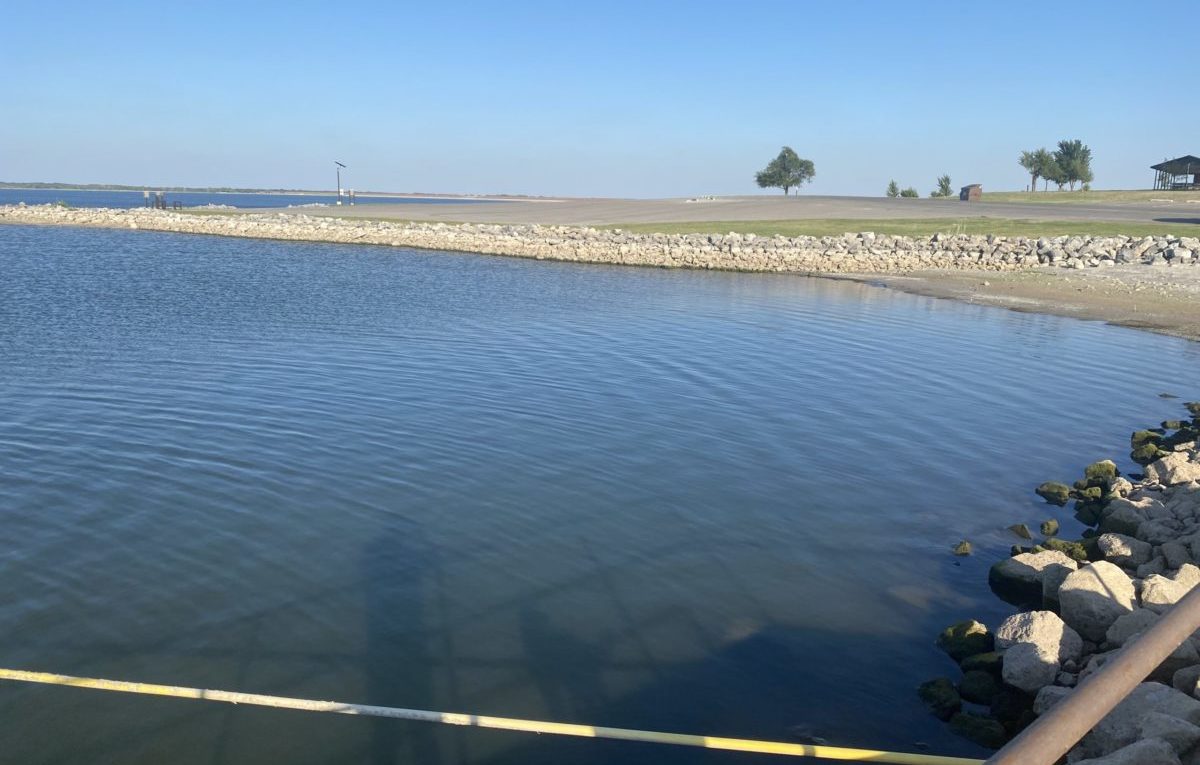
Oklahoma adopted Water for 2060 legislation in 2012. The aim is for the state’s freshwater consumption levels to remain the same in 2060 as they were in 2010. More than a decade in, Oklahoma Water Resources Board planning director Owen Mills said he has seen his early skepticism about the goal evaporate.
RELATED
Edmond water projects to provide independence from OKC, sustain long-term growth by Joe Tomlinson
“I used to be doubtful this initiative could meet its ambitious goal, but as time has gone on, perhaps by simple necessity, water sectors of every type are changing practices and making water saving investments or using nontraditional sources over fresh water — all while quoting Water for 2060 as their motivator or justification to gain support,” Mills said.
The Oklahoma Water Resources Board manages the state’s water resources and also develops long-term planning initiatives. Mills said planning for the future when it comes to water resources and needs is as important as planning for traffic flow in a city or a bigger and better airport, but with a twist.
“Like all other infrastructure, water means business,” he said. “Water means life to your town, your crops or business, your ability to attract new business, house and provide for new growth. But unlike other infrastructure, water is finite. So you need to plan ahead, be sure you’ve thought it through — not 10 years in advance, but 30 or 50 years out.”
Oklahoma City’s water use varies by season. During the winter months, the average hovers around 84 million gallons per day. During the summer, the amount can jump to 126 million gallons per day, said Oklahoma City Water Utilities Trust spokesperson Michelann Ooten.
Oklahoma City implemented its conservation plan in 2017. The plan outlines strategies the city is pursuing to use its renewable water supplies. The city also works to educate the public through its Squeeze Every Drop campaign. Ooten said the city has also worked to maintain a modern water system infrastructure.
But other cities and towns haven’t been able to keep pace. Mills said efficiency issues with water systems can be among the biggest causes of wasted water.
“It’s probably safe to say that in many — maybe most — systems, far more water is lost in the system distribution than is lost through individual waste of water,” Mills said. “Water loss is often 20 percent to 50 percent, or even more, of what a system produces due to leaks or accounting losses, often simply due to old worn meters.”
Mills said the reasons those systems aren’t maintained are long and complicated.
“There are a whole host of scenarios, but often, it can be due to years and years of prior administrations putting off necessary but expensive replacement and maintenance, maybe to spend on other perceived more critical projects at the time,” he said. “These systems live daily in the proverbial rock and a hard place. Because the cost of doing nothing over a long time becomes unmanageable, it’s too big of an ask for any one local administration to rise above. They can find themselves stuck on a hump they simply can’t get over.”
Beyond planning and improving infrastructure and raising public awareness about water conservation, Mother Nature has the final say at the end of the day. Mills said the Oklahoma Water Resources Board factors climate change into its approach for long-term planning. While the state’s Water for 2060 plan looks at the state’s long-term water needs, an updated version — the 2025 Oklahoma Comprehensive Water Plan — looks at immediate and near-term needs.
“Staff have been participating in an ongoing series put on by the United States Geological Survey and the NOAA to tailor better drought and water availability prediction tools,” Mills said. “The ongoing modeling efforts of the 2025 update contemplates the evaluation of current weather extremes and their expected impacts on both projected water demands and water supplies.”








